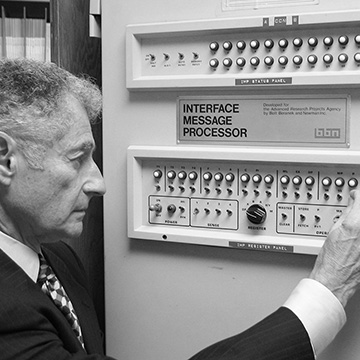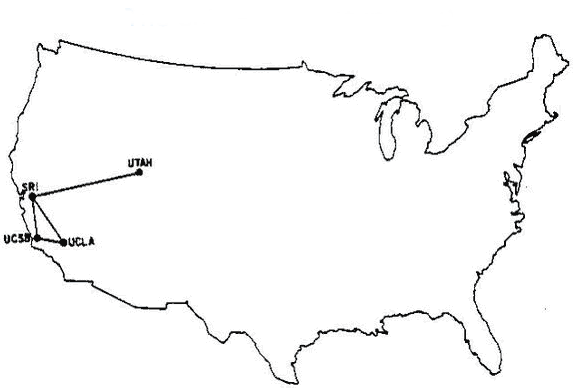On October 29, 1969, the first electronic message was sent from one computer to another. That was the day when the internet was born. But, how this happened and what was the first internet message ever sent?
The “father” of the internet is Dr. Leonard Kleinrock, an American engineer and computer scientist. His influence on the development of the internet can be observed through the development of the ARPAnet, the seedling of today’s internet.
Dr. Kleinrock received his Ph.D. from MIT in 1963. During late 50’s, when he started MIT, the computers were massive, but they had no way of talking to each other. He developed an experimental machine – a massive computer, named TX-2, and he was trying to design a new means of sending information between the TX-2 and other computers of the day.
With his MIT thesis, he sought to solve this problem, and he eventually settled on the idea of a network that exchanged information by breaking it into tiny pieces. The information has to be split and chopped into fixed-length blocks and those parts can be sent independently. Actually, that was the moment when he invented the notion of network packets, though that term was coined by another scientist, Donald Davies.
The packet switching methodology employed in the ARPAnet, one of the world’s first computer networks and the precursor to our modern internet. ARPAnet was network made up of 4 computers located at UC Santa Barbara, Stanford, the University of Utah, and the University of California.
The first node on the ARPAnet, was the University of California, Los Angeles, led by Kleinrock, who had taken a teaching position at UCLA meanwhile. From their Host computer, TSDS Sigma 7, they tried to send a message to SRI SDS 940 Host computer, at the Stanford Research Institute in North California. On 29. October 1969, at 10:30 pm, the first host-to-host connection of the ARPANET took place, and the first internet message ever was sent.
So what was that first message?
“Lo”. The first internet message ever sent was made of only two letters.
Actually, the UCLA team was trying to send “log”, and SRI computer would respond “in”. But after the Kleinrock’s team sent “l” and “o”, the letter “g” caused a memory overflow on Stanford’s host computer.
“So the first message was ‘Lo’, as in ‘Lo and Behold‘, ” Kleinrock says. “We couldn’t have asked for a better message.”
One hour later, they were able to send the complete message – “login”.


